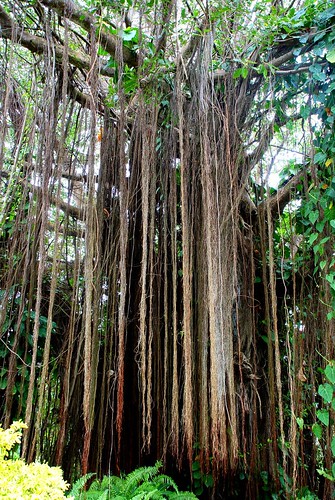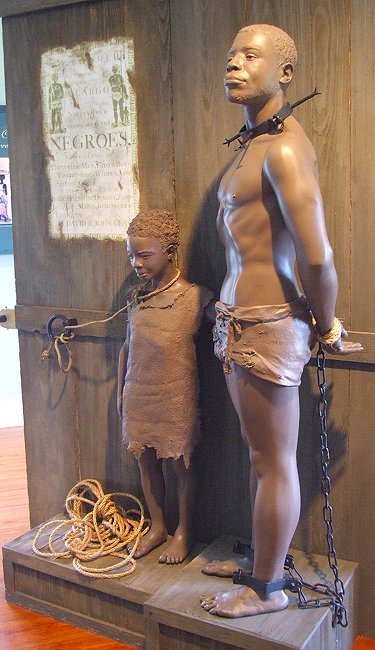

BARBADOS
Barbados is an island in the North Atlantic, to the east of the Caribbean island chain.
Recent archaeological evidence indicates that there were early Amerindian settlements on the island around 1623 B.C.
In pre-Columbian times, between 300 A.D.and 1200 A.D. Barbados was inhabited by Arawaks who called the island, Ichirouganaim.

They were routed by invading Carib indians from South America and the island was eventually deserted by the early 16th century.
Barbados was first visited by Spanish explorers, then the Portuguese, led by Pedro a Campos , in 1536, who named the island Los Barbados ( " the bearded ones ") after sighting the bearded fig trees on its shores.
The English first visited in the "Olive Blossom" in 1625 and returned in 1627, claiming the island for the English monarch, James 1. They named their landing site Jamestown, now called Holetown.
The early settlers had small land holdings and cultivated cotton, tobacco and indigo. In 1628, the capital city of Bridgetown was founded in its current location and the Parliament was established in 1639.

The next phase of Barbadian history was bound to sugar and slavery.
Dutch colonist, Pieter Blower brought sugarcane to Barbados in 1637 and under the guidance of Dutch planters ,sugar cultivation expanded in 1640 and it replaced cotton and tobacco as the main economic crop.
By 1660, Barbados sugar generated more money than all of the other English colonies combined and the island was divided into large sugar plantations, held by a powerful plantocracy.
 St. Nicholas Abbey Plantation Great House, Barbados
St. Nicholas Abbey Plantation Great House, Barbados
The trans-Atlantic slave trade supplied the demand for this labour- intensive crop and most of the slaves were brought from West Africa.

In Barbados, they came primarily from the Bight of Biafra (Igbo and Ibibio tribes); the Gold Coast (Akan tribe) and Bight of Benin (Ewe and Fon tribes).

The " Door of No Return" at Elmina Castle, Gold Coast ( Ghana) was the last exit point for slaves before they were forced to board the slave ships taking them from their homeland across the Middle Passage to the Caribbean.
The Barbados Slave Code was passed as law in 1661 to legalize slavery and was the precedent for slave codes in other British colonies including Jamaica and South Carolina.
Slaves were also re-exported from Bridgetown to other Caribbean islands, Venezuela and North America.
The Slave Trade Act of 1807, passed by the British Parliament, abolished slavery in the British Empire. By then, more than 380,000 African slaves had been shipped to Barbados.
However, institutionalized slavery in Barbados did not finally end until 1834.
This was followed by the suppposedly transitional period of the Apprenticeship until 1838 after which the former planters still retained political power until the majority populaton of slave descendants mobilized to gain enfranchisement. This was spearheaded by social leaders like Sir Grantley Adams in the 1930's onward.

Women were allowed to vote in 1942 and Sir Grantley became premier in 1958.

After a failed attempt at federation with other Caribbean islands between 1958-1962, a new political leader emerged in Sir Errol Walton Barrow. He implemented many social reforms, one of the greatest being free education- funded by the taxpayers- for the nation's children. Prior to this, a comprehensive education and its opportunities was reserved for the rich who could afford it.

Barrow led negotiations for the island's independence from Britain and, at midnight, on November 30, 1966, the Union Jack was lowered for the last time after more than 300 years of unbroken British rule.
At the same time, the flag of Barbados- the Broken Trident- was raised as a symbol of our independence.
Barbados became a republic on November 30, 2021, under the leadership of our current Prime Minister, the honorable Mia Amor Mottley.


BAJAN FOLKTALE
YARICO'S POND- based on historical accounts by Richard Ligon

Yarico was a young Amerindian maiden who lived in a coastal village in South America in the mid 17th-century.
One day, an English ship stopped there in search of supplies but many of the sailors were attacked and killed by the local people who thought they were dangerous spirits.
One, named Incle, escaped into the forest where he met Yarico. She hid him, treated his injuries and gave him food and shelter until it was safe for him to return to the ship.
Yarico had fallen in love with him and he took her with him to Barbados.
However, after landing, he betrayed her and sold her as a slave to Kendal plantation in St. John.
It is believed that Yarico later gave birth by a large pond at Kendal or drowned herself there and it is called Yarico's pond.
Images taken from Internet
 Translate
Translate